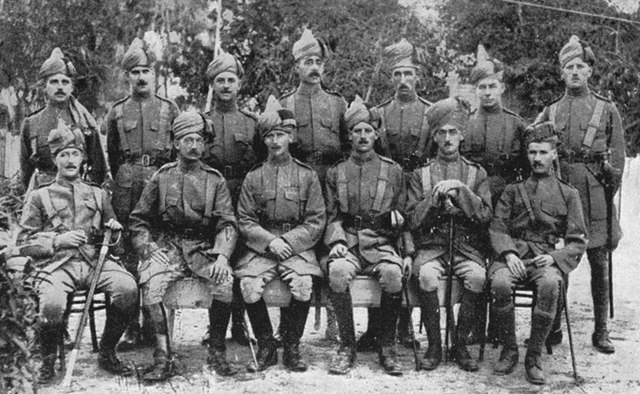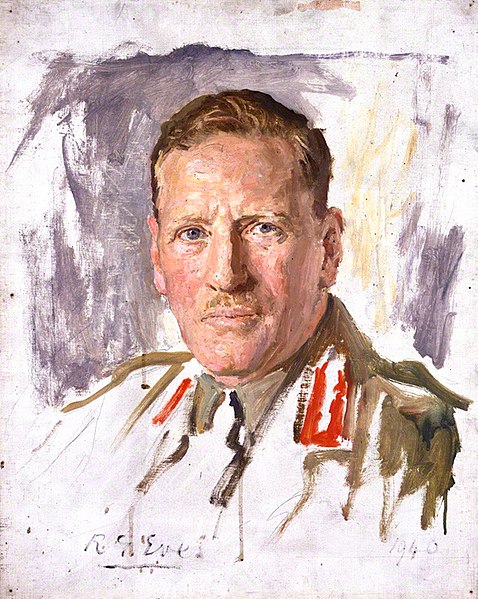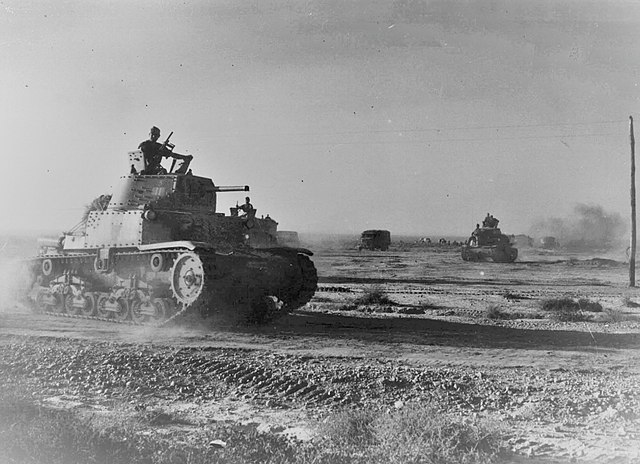Field Marshal Sir Claude John Eyre Auchinleck,, , was a British Indian Army commander who saw active service during the world wars. A career soldier who spent much of his military career in India, he rose to become commander-in-chief of the Indian Army by early 1941 during the Second World War. In July 1941 he was appointed commander-in-chief of the Middle East Theatre, but after initial successes, the war in North Africa turned against the British-led forces under his command, and he was relieved of the post in August 1942 during the North African campaign.
Portrait by Cecil Beaton, c. 1945
Officers of the 62nd Punjabis in Ismailia, Egypt, 1914. Captain Claude Auchinleck is standing on the far right.
A 1940 portrait of Auchinleck by Reginald Grenville Eves.
Sir Claude Auchinleck as Commander-in-Chief of the British forces in the Middle East.
The North African campaign of the Second World War took place in North Africa from 10 June 1940 to 13 May 1943. It included campaigns fought in the Libyan and Egyptian deserts, in Morocco and Algeria, and in Tunisia. The campaign was fought between the Allies and the Axis Powers. The Allied war effort was dominated by the British Commonwealth and exiles from German-occupied Europe. The United States officially entered the war in December 1941 and began direct military assistance in North Africa on 11 May 1942.
British Crusader tank passes a destroyed and smoking German Panzer IV tank during Operation Crusader, November 1941
A British Matilda Mk II named "Glenorchy" of Major K.P. Harris, MC, commander of 'D' Squadron, 7th Royal Tank Regiment during Operation Compass displaying an Italian flag captured at Tobruk, 24 January 1941
Erwin Rommel with Italian governor of Libya, General Italo Gariboldi (on Rommel's right), in Tripoli, February 1941
M13/40 tanks of the Ariete Armored Division on the attack during the Battle of Gazala








